CASTLEMAINE DIGGINGS NATIONAL HERITAGE PARK
CASTLEMAINE AND CHEWTON AND BARKERS CREEK AND CAMPBELLS CREEK AND FRYERSTOWN AND IRISHTOWN AND VAUGHAN AND GLENLYON AND TARILTA AND GLENLUCE AND PORCUPINE RIDGE AND GOLDEN POINT AND GUILDFORD AND MOONLIGHT FLAT AND FARADAY AND YAPEEN, MOUNT ALEXANDER SHIR
-
Add to tour
You must log in to do that.
-
Share
-
Shortlist place
You must log in to do that.
- Download report
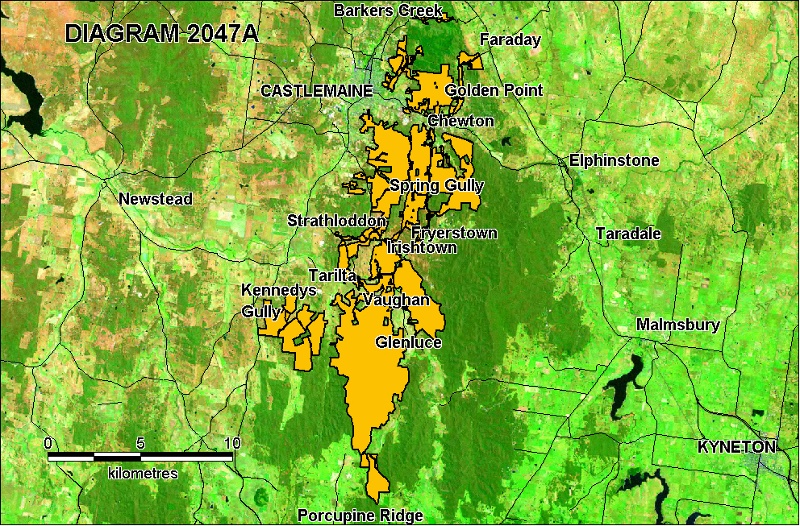

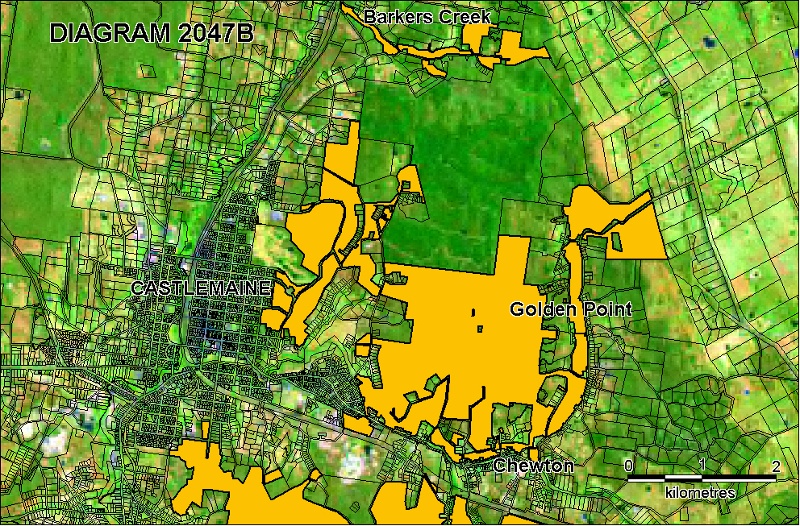
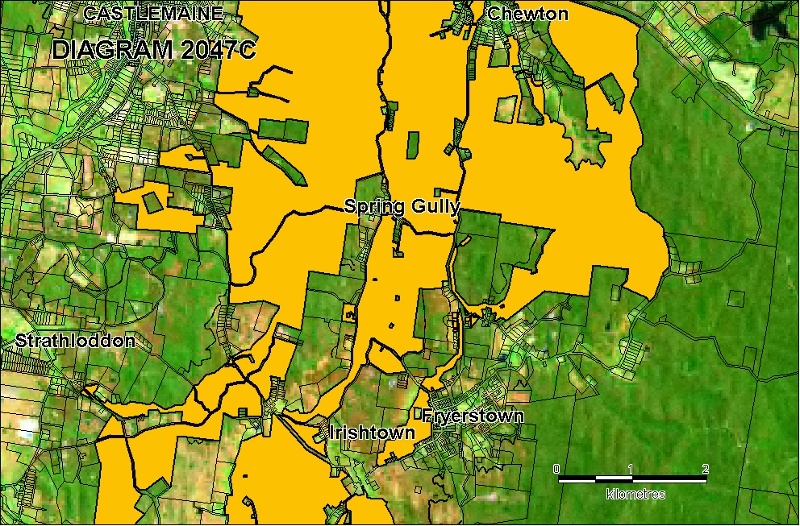

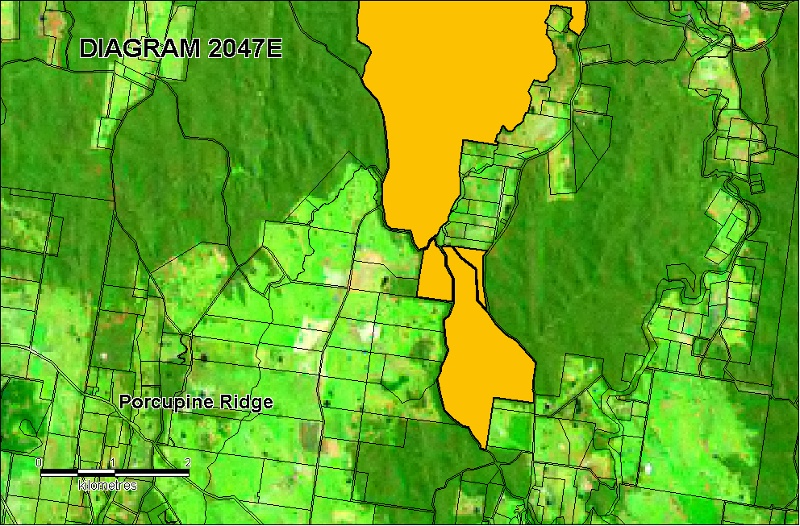
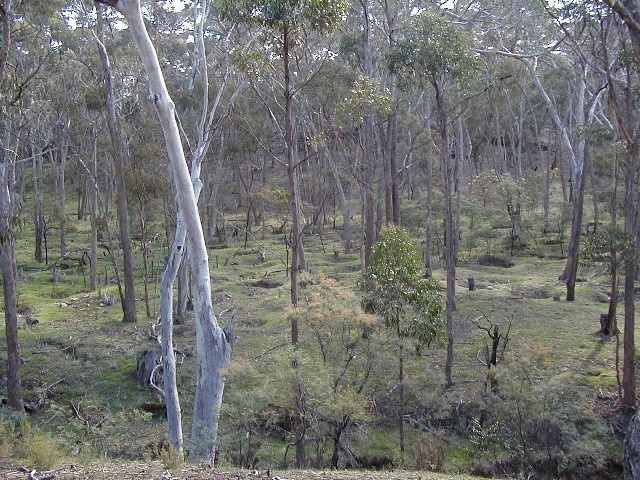
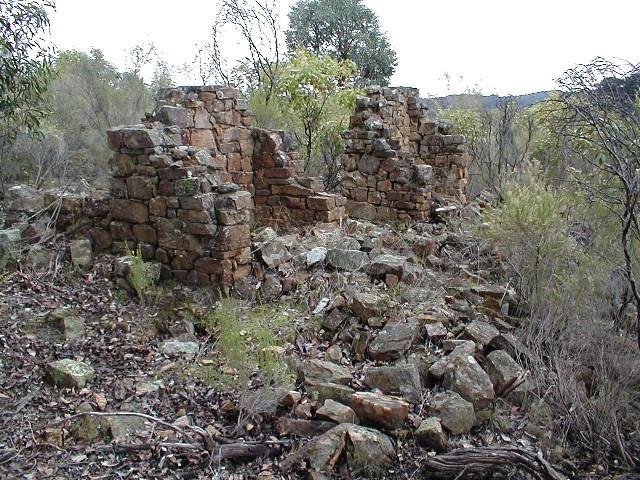

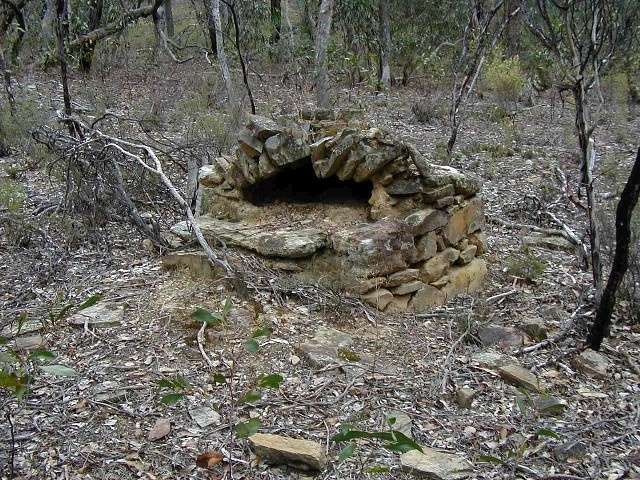





Statement of Significance
What is significant?
The Castlemaine Diggings National Heritage Park envelopes a goldfield which was the catalyst for the Victorian gold rush of the early 1850s. In that tumultuous decade Victorian gold transformed the demographic, social, political and economic complexion of Australia. The gold won from Mount Alexander (later renamed Castlemaine) and other early rushes such as Ballarat and Bendigo mainly found its way to England as bullion where it helped bankroll a spectacular period of world trade, industrial and commercial expansion.
Following the flush of discovery in July 1851, Mount Alexander all but depopulated other Australian goldfields; by mid-1852 it was renowned as a world significant goldfield. The Mount Alexander rush drew large numbers of gold seekers from Britain, Europe and America and was the first Victoria goldfield on which Chinese miners converged in large numbers, in 1854. The Mount Alexander rush helped established a pattern of international and local migration for future Australian and international gold rushes.
Of the major 1850s goldfields, Mount Alexander alone remained a primarily surface field, and for this reason has uniquely preserved the early alluvial landscape. Ballarat and Bendigo were transformed into great cities by even richer underground mines which obliterated their gold rush workings.
At the core of the Castlemaine Diggings National Heritage Park is an area of land, approximately 50 km by 10 km, containing auriferous quartz reefs, gullies, flats and hills which encompasses the goldfield known historically as the Mount Alexander Diggings. Inextricably linked to the historic gold locations is an abundance of mining relics relating to the early 1850s Mount Alexander gold rush. They form subtle landscapes comprising shallow alluvial diggings, tracks, burial grounds, huts and fireplaces, puddling machines, sluices and tail races, quartz roasting kilns and early quartz mining & battery sites. Interlacing the gold rush features is physical evidence of successive periods of mining which lead up to the present day.
Despite the transformation of the natural environment evidence of Aboriginal occupation such as rock wells and stone tools is also present. This outstanding archaeological palimpsest is now part of a regenerating Box-Ironbark forest which is in its own right an artefact of gold mining and later forestry. The place names of the park's gold mining locations are significant markers of ethnicity, experiences and events of the Mount Alexander rush. Adjoining the park are the townships born of the gold rush, Barkers Creek, Castlemaine, Chewton, Fryerstown, Vaughan, Campbells Creek and Guildford.
How is it significant?
The Castlemaine Diggings National Heritage Park is of historical, scientific, archaeological and aesthetic (landscape) significance to the State of Victoria.
Why is it significant?
The Castlemaine Diggings National Heritage Park is historically significant as an authentic and intact early 1850s goldfield. It was the catalyst for the Victorian gold rush of the 1850s, which was a profoundly significant event in the shaping of Australia. In that tumultuous decade Victorian gold transformed the demographic, social, political and economic complexion of Australia.
The Castlemaine Diggings National Heritage Park is scientifically significant because it envelopes an extraordinary mass of geological, geomorphologic and cultural features relating to initial and subsequent periods of gold mining from 1851 to the present day. Its uniqueness lies in the authentic nature of the gold rush material evidence as compared to other contemporary goldfields, its association with the momentous Mount Alexander rush, and the intactness and diversity of the preserved mining sequence over a period of 150 years. The integrity of the 1850s gold-rush landscape in the section south of Vaughan is particularly exceptional. The park also has some of the earliest remaining gold reef mining sites in Australia. Many of the alluvial and reef mining sites are associated with remnants of housing, which are significant both as evidence of historical occupation of the goldfield and as archaeological resources likely to contain evidence which will cast greater light on ethnicity, mining and domestic life. The land and its regenerating Box-Ironbark forest is important scientific evidence in its own right in demonstrating a spectacular event of transformation of the pre-gold rush environment.
The Castlemaine Diggings National Heritage Park is a mysterious and picturesque landscape of environmental transformation and regeneration and is culturally significant as the embodiment of the Mount Alexander rush, the commencement of the Victorian gold rush proper. The overall quality and range of surviving sources of information (archaeological, environmental and historical) when combined speaks eloquently of the history of the Mount Alexander rush of Victoria's first great concentration and mixing of ethnic and regional groups. Mount Alexander and its central Victorian contemporaries, Bendigo and Ballarat, were responsible for energising society in the early 1850s with results that transformed Australia.
-
-
CASTLEMAINE DIGGINGS NATIONAL HERITAGE PARK - Permit Exemptions
General Exemptions:General exemptions apply to all places and objects included in the Victorian Heritage Register (VHR). General exemptions have been designed to allow everyday activities, maintenance and changes to your property, which don’t harm its cultural heritage significance, to proceed without the need to obtain approvals under the Heritage Act 2017.Places of worship: In some circumstances, you can alter a place of worship to accommodate religious practices without a permit, but you must notify the Executive Director of Heritage Victoria before you start the works or activities at least 20 business days before the works or activities are to commence.Subdivision/consolidation: Permit exemptions exist for some subdivisions and consolidations. If the subdivision or consolidation is in accordance with a planning permit granted under Part 4 of the Planning and Environment Act 1987 and the application for the planning permit was referred to the Executive Director of Heritage Victoria as a determining referral authority, a permit is not required.Specific exemptions may also apply to your registered place or object. If applicable, these are listed below. Specific exemptions are tailored to the conservation and management needs of an individual registered place or object and set out works and activities that are exempt from the requirements of a permit. Specific exemptions prevail if they conflict with general exemptions. Find out more about heritage permit exemptions here.Specific Exemptions:General Conditions: 1. All exempted works are to be planned and carried out in a manner which prevents damage to the fabric of the registered place or object.General Conditions: 2. Should it become apparent during further inspection or the carrying out of works that original or previously hidden or inaccessible details of the place or object are revealed which relate to the significance of the place or object, then the exemption covering such alterations shall cease and the Executive Director shall be notified.
Note: All heritage places have the potential to contain significant sub-surface artefacts and other remains. In most cases it will be necessary to obtain approval from Heritage Victoria before the undertaking any works that have a significant sub-surface component.
General Conditions: 3. If there is a conservation policy and plan approved by the Executive Director, all works shall be in accordance with it.
Note: The existence of a Conservation Management Plan or a Heritage Action Plan approved by the Executive Director provides guidance for the management of the heritage values associated with the site. It may not be necessary to obtain a heritage permit for certain works specified in the management plan.
General Conditions: 4. Nothing in this declaration prevents the Executive Director from amending or rescinding all or any of the permit exemptions. General Conditions: 5. All Indigenous issues are to be dealt with through the appropriate legislative requirements of Commonwealth and State Acts such as the Aboriginal and Torres Island Heritage Protection Act 1984; Native Title Act 1993; and the Archaeological and Aboriginal Relics Preservation Act 1972. Nothing in this declaration exempts owners or their agents from the responsibility to obtain relevant planning or building permits from the responsible authorities where applicable. Regular Site MaintenanceThe following site maintenance works are permit exempt under section 66 of the Heritage Act 1995,
a) Regular site maintenance provided the works do not involve the removal or destruction of any significant above-ground features or sub-surface archaeological artefacts or deposits;
b) the maintenance of an item to retain its conditions or operation without the removal of or damage to the existing fabric or the introduction of new materials;
c) cleaning including the removal of surface deposits, organic growths, or graffiti by the use of low pressure water and natural detergents and mild brushing and scrubbing;
d) repairs, conservation and maintenance to exisitng plaques, memorials, roads and paths, car parks, fences and gates and drainage and irrigation.
e) The replacement of existing services such as cabling, plumbing, wiring and fire services that uses existing routes, conduits or voids, and does not involve damage to or the removal of significant fabric.
f) The installation of new infrastructure such as car parks, protective fences and toilets where these features do not disturb the heritage values of the place.
Note: Surface patina which has developed on the fabric may be an important part of the item's significance and if so needs to be preserved during maintenance and cleaning.
Note: Any new materials used for repair must not exacerbate the decay of existing fabric due to chemical incompatibility, obscure existing fabric or limit access to existing fabric for future maintenance. Repair must maximise protection and retention of fabric and include the conservation of existing details or elements.
Fire Suppression DutiesThe following fire suppression duties are permit exempt under section 66 of the Heritage Act 1995,
a) Fire suppression and fire fighting duties provided the works do not involve the removal or destruction of any significant above-ground features or sub-surface archaeological artefacts or deposits;
b) Fire prevention activities such as fuel reduction burns, and fire control line construction, provided all significant historical and archaeological features are appropriately recognised and protected;
Note: Fire management authorities should be aware of the location, extent and significance of historical and archaeological places when developing fire suppression and fire fighting strategies. The importance of places listed in the Heritage Register must be considered when strategies for fire suppression and management are being developed.
Weed and Vermin Control
The following weed and vermin control activities are permit exempt under section 66 of the Heritage Act 1995,
a) Weed and vermin control activities provided the works do not involve the removal or destruction of any significant above-ground features or sub-surface archaeological artefacts or deposits;
Note: Particular care must be taken with weed and vermin control works where such activities may have a detrimental affect on the significant fabric of a place. Such works may include the removal of ivy, moss or lichen from an historic structure or feature, or the removal of burrows from a site that has archaeological values.
Landscape Maintenance
The following landscape maintenance works are permit exempt under section 66 of the Heritage Act 1995,
a) Landscape maintenance works provided the activities do not involve the removal or destruction of any significant above-ground features or sub-surface archaeological artefacts or deposits;
b) Watering, mowing, top-dressing and fertilising necessary for the continued health of plants, without damage or major alterations to layout, contours, plant species or other significant landscape features;
c) Pruning to control size, improve shape, flowering or fruiting and the removal of diseased, dead or dangerous material, not exceeding 20% of the crown of the tree within a period of two years;
d) Tree surgery by a qualified horticulturalist or tree surgeon necessary for the health of those plants.
e) Ecological thinning as part of an approved management plan.
Public Safety and SecurityThe following public safety and security activities are permit exempt under section 66 of the Heritage Act 1995,
a) Public safety and security activities provided the works do not involve the removal or destruction of any significant above-ground structures or sub-surface archaeological artefacts or deposits;
b) The erection of temporary security fencing, scaffolding, hoardings or surveillance systems to prevent unauthorised access or secure public safety which will not adversely affect significant fabric of the place including archaeological features;
c) Development including emergency stabilisation necessary to secure safety where a site feature has been irreparably damaged or destabilised and represents a safety risk to its users or the public.
Note: Urgent or emergency site works are to be undertaken by an appropriately qualified specialist such as a structural engineer, or other heritage professional.
Signage and Site InterpretationThe following Signage and Site Interpretation activities are permit exempt under section 66 of the Heritage Act 1995,
a) Signage and site interpretation activities provided the works do not involve the removal or destruction of any significant above-ground structures or sub-surface archaeological artefacts or deposits;
b) The erection of non-illuminated signage for the purpose of ensuring public safety or to assist in the interpretation of the heritage significance of the place or object and which will not adversely affect significant fabric including landscape or archaeological features of the place or obstruct significant views of and from heritage values or items;
c) Signage and site interpretation products must be located and be of a suitable size so as not to obscure or damage significant fabric of the place;
d) Signage and site interpretation products must be able to be later removed without causing damage to the significant fabric of the place;
Note: The development of signage and site interpretation products must be consistent in the use of format, text, logos, themes and other display materials.
Note: Where possible, the signage and interpretation material should be consistent with other schemes developed on similar or associated sites. It may be necessary to consult with land managers and other stakeholders concerning existing schemes and strategies for signage and site interpretation.
Mineral Exploration and Prospecting
The following Mineral Exploration activities are permit exempt under section 66 of the Heritage Act 1995,
a) Mineral Exploration activities provided the works do not involve the removal or destruction of any significant above-ground features or sub-surface archaeological artefacts or deposits;
b) Preliminary non-intrusive exploration, including geological mapping, geophysical surveys, and geochemical sampling and access to shafts and adits;
c) Advanced forms of exploration (drilling), including the location of drill pads and access tracks where this has been the subject of on-site negotiation and agreement with representatives of Heritage Victoria, DSE and Parks Victoria, and where all significant historic site features have been identified and protected as part of an approved work plan.
d) Prospecting in accordance with conditions as shown in Victorian Government Gazette, S 199, National Parks Act 1975, Section 32D (30 October 2002), or in the CDNHP Management Plan or in any agreed Code of Practice for Prospecting for Minerals on Crown Land.
Note: All mining exploration activities should be in accordance with the Administrative Protocols for Mineral Exploration established by Heritage Victoria and the Department of Natural Resources & Environment (DSE).
Minor WorksNote: Any Minor Works that in the opinion of the Executive Director will not adversely affect the heritage significance of the place may be exempt from the permit requirements of the Heritage Act. A person proposing to undertake minor works may submit a proposal to the Executive Director. If the Executive Director is satisfied that the proposed works will not adversely affect the heritage values of the site, the applicant may not be required to obtain a heritage permit.
CASTLEMAINE DIGGINGS NATIONAL HERITAGE PARK - Permit Exemption Policy
Through the registration it is desired to conserve the authentic nature of individual places, groups of places and cultural landscapes associated with the park's mining history. The greatest threats to these places and landscapes are treasure hunting and bottle collecting, off-road vehicles (4WDs andmotor bikes), invasive vegetation (mainly exotic), animal pests (mainly rabbits), scavenging of building material, rubbish dumping and urban sprawl. The purpose of the permit exemptions is to allow a level of management works and bush uses that do not impact on significant heritage values so future generations will be able to appreciate the park's mysterious and picturesque character of ruins, environmental transformation and regeneration.
The following activities are exempt from the need to obtain a permit on the condition that the heritage fabric of the place is not disturbed in any way, and that all other relevant permits are obtained from the responsible authority: passive recreation including bushwalking, orienteering, rogaining, mountain bike riding, horse-riding, dog-walking, camping, bee-keeping, car-rallying, 2WD/4WD driving,mountain bikeriding festivals, commercial filming and photography.
Permit exemptions will be reviewed in conjunction with a Conservation Management Plan when supplied by the owners or land managers and to the satisfaction of the Executive Director.
If an applicant is uncertain whether a heritage permit is required, it is recommended that the permits co-ordinator be contacted.
-
-
-
-
-
CASTLEMAINE DIGGINGS NATIONAL HERITAGE PARK
 Victorian Heritage Register H2047
Victorian Heritage Register H2047
-
..esterville
 Yarra City
Yarra City -
1 Alfred Crescent
 Yarra City
Yarra City -
1 Barkly Street
 Yarra City
Yarra City
-
-










